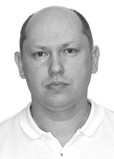Cardiorespiratory System Functionality in Students Involved in Therapeutic Swimming
Фотографии:
ˑ:
V.S. Milashechkin1
A.V. Rusanov1
A.S. Valyugo1
1Peoples' Friendship University of Russia, Moscow
Objective of the study was to assess the state of the functional reserves of the cardiorespiratory system of students involved in therapeutic swimming.
Methods and structure of the study. The study was carried out in vivo at the premises of the Peoples' Friendship University of Russia and public swimming pool "Harmony", SBI "Physical Culture and Sports Center of the South-West Administrative District of Moscow", Moscomsport. Sampled for the study were the 1st-2nd year-old male students without health deviations, who were divided into two groups: 1st — Control Group — representatives of the body conditioning group (n=28); 2nd — Experimental Group — students engaged in competitive therapeutic swimming (n=17). The cardiorespiratory system performance rates were determined based on the following indicators: chest excursion, vital capacity, oxygen concentration in the capillary blood (in %, using a pulse oximeter), heart rate, systolic blood pressure, diastolic blood pressure, pulse pressure.
Results of the study. The pulse oximetry method revealed that at the beginning of the academic year, oxygen concentration in the capillary blood in both groups did not exceed 96-97%. At the end of the academic year, the average oxygen concentration in the Control Group students remained at the level of 96.32±0.61%, while in the Experimental Group students this indicator increased to 98.47±0.52% (p˂0.01), which testified to the improvement in peripheral blood circulation in the students engaged in competitive and therapeutic swimming.
Conclusion. As seen from the findings of the study, the following external respiration rates increased objectively: vital capacity, systolic blood pressure, and pulse pressure, as well as oxygen concentration in capillary blood in the students involved in competitive therapeutic swimming, which indicates increased power reserves of the cardiorespiratory system.
Keywords: competitive therapeutic swimming, students, health, cardiorespiratory system, functional reserves, physical education.
References
- Garmonova V.E., Boreyko O.N. Ozdorovitelnoe znachenie plavaniya [Wellness value of swimming]. Vestnik Taganrogskogo pedagogicheskogo instituta. 2015. no. 2. pp. 9698.
- Dorovskikh I.G. Dvigatelnaya aktivnost kak faktor ozdorovleniya podrastayuschego pokoleniya [Motor activity as a factor in health improvement of younger generation]. Vestnik Yugorskogo gosudarstvennogo universiteta. 2016.no.1 (40). pp. 167169.
- Ivanov K.V. Effektivnost zanyatiy plavaniem so studentami spetsialnoy meditsinskoy gruppyi [Efficiency of swimming practices with special health group students]. Vestnik sportivnoy nauki: Obrazovanie, sportivnaya nauka. 2009. no. 1. pp. 5658.
- Krugliy A.V., Slyudyko I.A. Organizatsiya i metodika provedeniya zanyatiy po plavaniyu so studentami spetsialnogo meditsinskogo otdeleniya: metodicheskie ukazaniya [Organization and methods of swimming class design with special health group students: guidelines]. Ukhta, USTU publ., 2012.35 p.
- Milashechkina E.A., Jandarova T.I., Kunitsyna E.A. Adaptatsionnyie vozmozhnosti organizma studentok spetsialnoy meditsinskoy gruppyi, imeyuschih narusheniya serdechnososudistoy sistemy [Body adaptation capabilities of special health group students with cardiovascular disorders]. Chelovek. Sport. Meditsina. 2018. v. 18. no. 4. pp. 123129.
- Sudakova Yu.E., Pakhraeva O.V., Kamenek E.S. ,Yatsenko M.V. Vnedrenie ozdorovitelnyih metodik v uchebnyie zanyatiya studentov spetsialnoy meditsinskoy gruppy [Introduction of wellness techniques in training sessions of special health group students]. Izvestiya Altayskogo gosudarstvennogo universiteta. 2014. no. 21 (82). pp. 5658.



 Журнал "THEORY AND PRACTICE
Журнал "THEORY AND PRACTICE